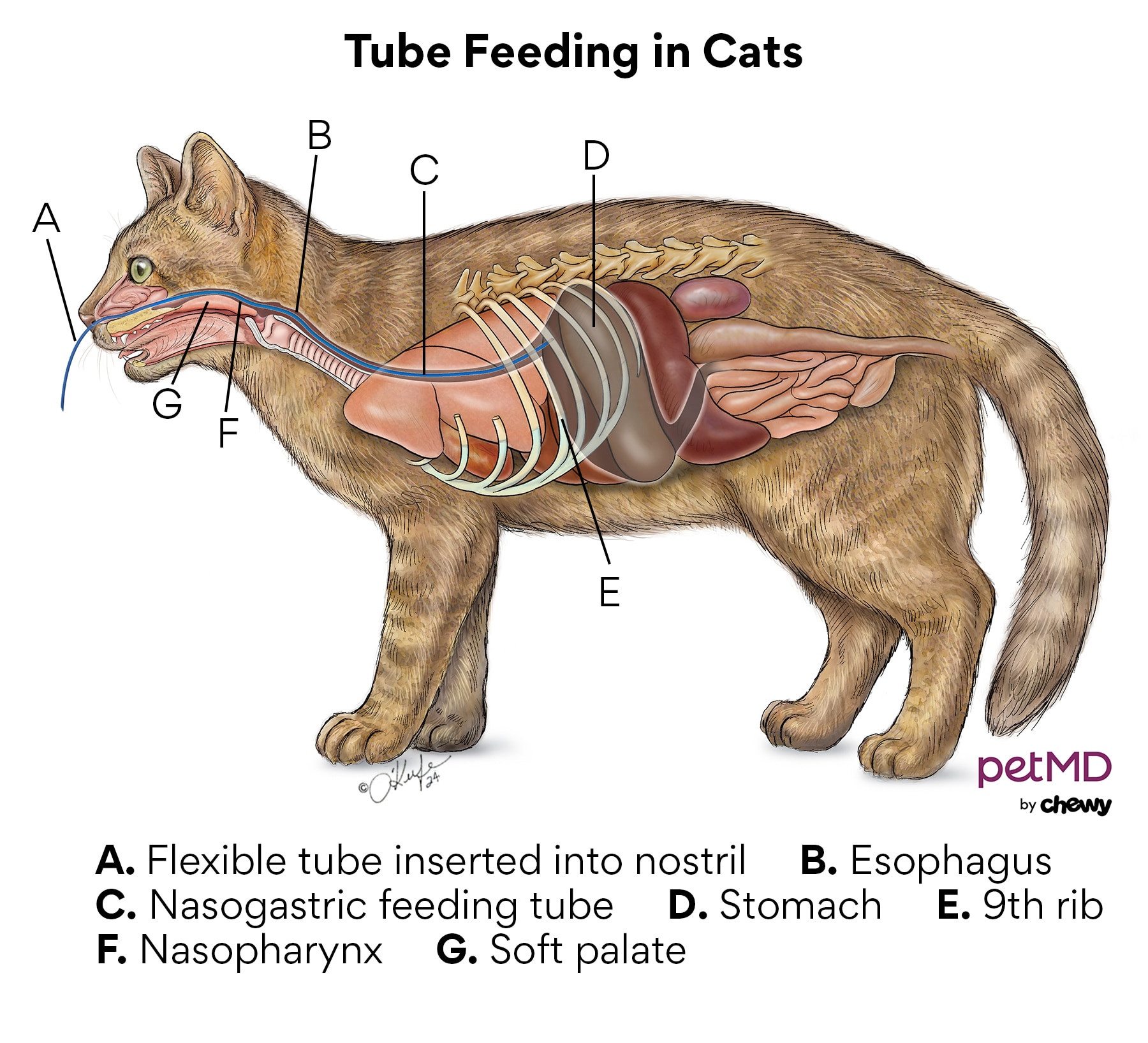Cats are known for their discerning palates and their love for a good meal. So, when your feline friend starts turning their nose up at food, it can be a cause for concern. If your cat is eating less, picking at their meals, or has stopped eating altogether (a condition known as anorexia), it’s crucial to recognize that this could be a sign of an underlying health issue.
Loss of appetite in cats is not something that typically resolves on its own at home. In fact, anorexia in cats is considered a medical emergency. Prompt veterinary attention is vital to diagnose the root cause of your cat’s inappetence and to start appropriate treatment.
Veterinarians frequently prescribe appetite stimulants for cats to encourage them to eat again. The sooner a cat experiencing anorexia receives veterinary care, the better their chances of recovery.
This article provides general information about appetite stimulants for cats. Always consult with your veterinarian for personalized advice regarding your cat’s health and treatment options.
Key Points to Understand About Appetite Stimulants for Cats
- Appetite stimulants for cats are prescription medications designed to help cats regain their appetite when they are unwell or not eating properly.
- Cats that are experiencing a reduced appetite or complete anorexia can significantly benefit from appetite stimulants. This includes cats recovering from illness or surgery, those with chronic conditions, and even newly adopted cats dealing with stress.
- Common and effective appetite stimulants prescribed for cats include medications like Mirataz, Elura, Cerenia, and Cyproheptadine.
- These medications are only available through a prescription from your veterinarian.
What Exactly Are Appetite Stimulants for Cats?
Appetite stimulants for cats are veterinary prescription drugs that work by influencing various internal systems in a cat’s body to stimulate their desire to eat.
A cat’s body is not designed to go without food for extended periods. Going without food for even 24 to 36 hours can lead to serious health complications in cats. In these situations, an appetite stimulant can be a crucial medication, potentially saving a cat’s life.
Identifying the Reasons Behind Loss of Appetite in Cats
Several factors can contribute to a decrease or loss of appetite in cats. These can range from temporary discomfort to more serious underlying health conditions:
- Illness: Infections, whether viral or bacterial, and inflammatory diseases can significantly impact a cat’s appetite.
- Medication Side Effects: Certain medications, such as antibiotics, can sometimes cause a decrease in appetite as a side effect.
- Underlying Medical Conditions: Chronic diseases such as diabetes, kidney disease, and liver disease are known to cause appetite loss in cats.
- Stress and Anxiety: Stress, particularly in newly adopted cats who may be anxious, shy, or fearful in a new environment, can lead to reduced appetite.
- Cancer: Cancer and its related treatments can also be a cause of appetite loss in felines.
Determining If Your Cat Needs an Appetite Stimulant
Your veterinarian plays a critical role in determining if an appetite stimulant is appropriate for your cat. After a thorough review of your cat’s medical history and a comprehensive physical examination, your vet will decide the best course of action.
There are several scenarios where your vet might recommend an appetite stimulant for your cat:
- Accelerating Recovery from Illness: To help cats regain their strength and recover more quickly after being sick.
- Short-Term Support During Diagnosis: While waiting for results from diagnostic tests to pinpoint the exact cause of inappetence.
- Post-Surgical Appetite Encouragement: To stimulate eating after surgery when cats may be reluctant to eat.
- Nutritional Support for Chronic Conditions: To help maintain nutrition in cats suffering from chronic illnesses like chronic kidney disease or cancer.
However, it’s important to note that appetite stimulants are not always effective in all situations. For cats that are critically ill or severely malnourished, appetite stimulants may not be sufficient. In these cases, a feeding tube might be a more effective way to ensure the cat receives adequate nutrition.
 Chart of tube feeding in cats.
Chart of tube feeding in cats.
It’s also crucial to remember that even if your cat is eating, it doesn’t automatically mean they are consuming enough calories to meet their nutritional needs.
Your veterinarian may advise you to monitor your cat’s weight daily using a scale accurate for cats to ensure they are gaining weight appropriately and receiving sufficient nutrition.
Prescription Appetite Stimulants Available for Cats
Veterinarians have several prescription appetite stimulants available to help cats with inappetence:
Mirtazapine (Mirataz)
Mirataz is frequently the first-choice Appetite Stimulant For Cats.
FDA-approved for unintended weight loss in cats, mirtazapine, the active ingredient in Mirataz, is an antidepressant that works to block chemical signals in the brain that contribute to nausea and suppress appetite. It is believed to stimulate appetite through multiple pathways in the body.
Mirtazapine is available in different formulations:
- Transdermal Ointment (Mirataz): Applied topically to the inner ear, offering ease of administration, especially for cats resistant to oral medications.
- Oral Tablets: Tablets are also available and can be prescribed depending on the cat’s specific needs and condition.
Common side effects of Mirataz can include:
- Application Site Reactions: Redness or irritation where the ointment is applied (if using the transdermal form).
- Lethargy or Grogginess: Cats may seem more tired or less alert.
- Behavioral Changes: Vocalization and agitation have been observed in some cats.
Capromorelin (Elura)
Elura is another FDA-approved medication specifically for stimulating appetite in cats experiencing unintended weight loss associated with chronic kidney disease.
Capromorelin, the active component in Elura, functions by increasing the release of growth hormone, which in turn signals the brain to stimulate appetite.
Elura is available as a liquid oral solution, making it easy to administer. Potential side effects can include:
- Vomiting: Some cats may experience vomiting after administration.
- Reduced Appetite: Ironically, in some cases, it can lead to a temporary decrease in appetite.
Maropitant Citrate (Cerenia)
Cerenia is primarily an anti-nausea medication that can indirectly act as an appetite stimulant. By effectively blocking nausea in cats, Cerenia can help cats who are not eating due to nausea to feel better and start eating again.
The injectable form of Cerenia is FDA-approved for cats for the treatment of acute vomiting.
While oral formulations of Cerenia (tablets and compounded forms) are not FDA-approved for cats, veterinarians frequently use them in practice. This is considered “off-label” or “extra-label” use, which is legally permissible under certain conditions when veterinarians believe it is beneficial for the animal’s health.
Maropitant, the active ingredient, works by blocking the vomiting center in the brain, thus alleviating nausea and potentially encouraging cats to eat.
The main side effect associated with Cerenia injection is temporary pain or vocalization at the injection site.
Cyproheptadine
Cyproheptadine is an antihistamine primarily used in humans but also prescribed by veterinarians as an appetite stimulant for cats, except in cases of hepatic lipidosis. It works by blocking histamine, a chemical messenger in the brain that can suppress appetite.
Cyproheptadine is typically used for longer-term appetite stimulation as it may take a few days to become fully effective.
It is available in generic tablet form and as compounded formulations. Currently, it is not FDA-approved for veterinary use, but veterinarians can prescribe it extra-label when deemed necessary.
Potential side effects of cyproheptadine may include:
- Changes in Behavior: Hyperexcitability or, conversely, sedation.
- Dry Mouth: Reduced saliva production.
Exploring Natural Appetite Stimulants for Cats
It’s important to reiterate that loss of appetite in cats is often a symptom of a medical issue that requires veterinary diagnosis and treatment. If your cat has stopped eating, a vet visit should be your first step. However, alongside veterinary care, some natural approaches can be used to encourage appetite.
Probiotic Supplements
Probiotics are beneficial live microorganisms that can help restore a healthy balance of bacteria in your cat’s digestive system, which in turn can improve digestion and potentially stimulate appetite.
Probiotic supplements, often available in powdered form like Purina Pro Plan FortiFlora or Nutramax Proviable, can be sprinkled on top of your cat’s food or mixed in. Many cats find the taste appealing, which can help entice them to eat.
Appealing Canned Food and Food Toppers
Offering highly palatable canned food is a simple yet effective way to encourage a cat to eat.
Your vet might suggest trying readily available over-the-counter options and toppers, including brands like Science Diet Sensitive Stomach and Skin, Purina Sensitive Skin and Stomach, Fancy Feast, and Friskies Lil’ Soups Topper.
Alternatively, your veterinarian may prescribe a therapeutic diet such as Royal Canin Recovery or Hill’s a/d Urgent Care. These diets are specifically formulated to be highly palatable and nutrient-dense, often with higher protein and fat content to support recovery.
Additional Strategies to Encourage Your Cat to Eat
Beyond appetite stimulants and dietary changes, there are other environmental and behavioral adjustments you can make to encourage your cat to eat:
- Create a Peaceful Eating Space: Provide a quiet, private area for your cat to eat where they won’t be disturbed by other pets or household activity. Reducing stress during meal times can be beneficial.
- Maintain Cleanliness: Wash food and water bowls daily. Cats are sensitive to smells and may be deterred by dirty bowls.
- Separate Food and Litter Areas: Keep food and water bowls in a different room, away from the litter box. Cats naturally prefer to eat and drink away from their elimination areas.
- Warm Up Canned Food: Lightly warming canned food can enhance its aroma, making it more appealing to cats, especially those with a diminished sense of smell due to illness. Ensure the food is not too hot before serving.
Cat Appetite Stimulants: Frequently Asked Questions
What is considered the most effective appetite stimulant for cats?
Effective prescription appetite stimulants for cats include Mirataz, Elura, Cerenia, and cyproheptadine. The best choice depends on the individual cat’s condition, and it is crucial to consult with your veterinarian for a tailored recommendation.
How quickly do appetite stimulants start working in cats?
Most appetite stimulants typically begin to show effects within a few hours. However, cyproheptadine may take a bit longer, around two and a half days, to become fully effective. If your cat is still not eating adequately after two to three days on an appetite stimulant, it is essential to revisit your veterinarian for further evaluation.
What are some immediate steps to stimulate my cat’s appetite?
You can try offering savory canned food, gently warming their food to enhance its smell, adding a probiotic powder supplement to their meal, or using a palatable food topper. For dry food, consider using a food puzzle toy to make eating more engaging. However, remember that a decreased appetite is often linked to an underlying health issue, making it important to consult with your veterinarian to determine the cause and receive appropriate guidance.
Disclaimer: This article is for informational purposes only and does not constitute veterinary advice. Always consult with a qualified veterinarian for diagnosis and treatment of your pet’s health issues.
References
- Agnew W, Korman R. Pharmacological appetite stimulation: Rational choices in the inappetent cat. Journal of Feline Medicine and Surgery. August 2014.
References
WRITTEN BY
Molly Price, DVM
Veterinarian
Dr. Molly Price has practiced small animal medicine for over 20 years and is a graduate of Texas A&M College of Veterinary Medicine. She…

